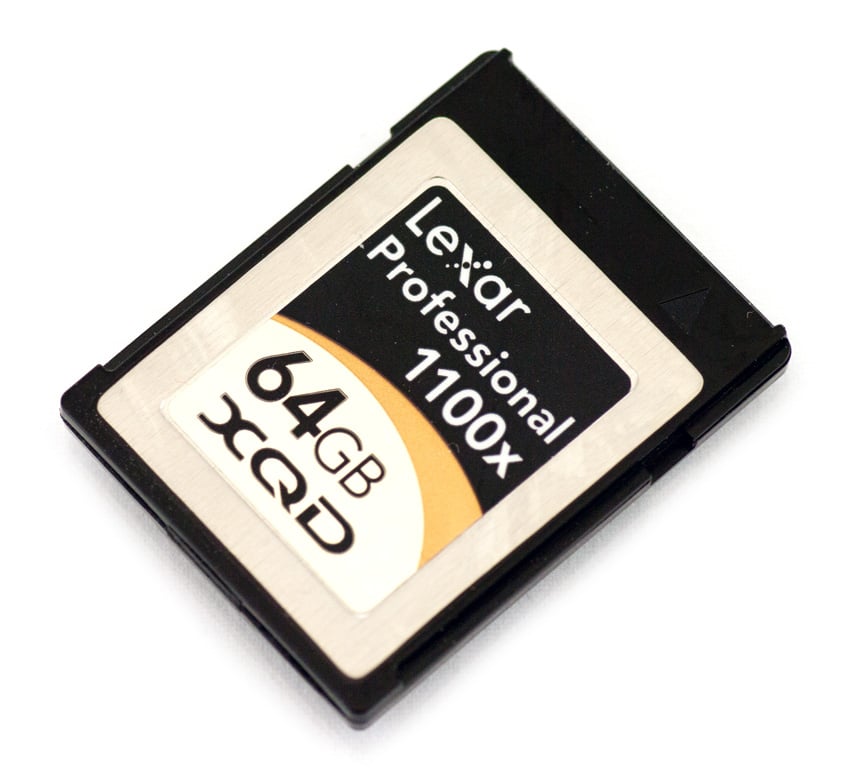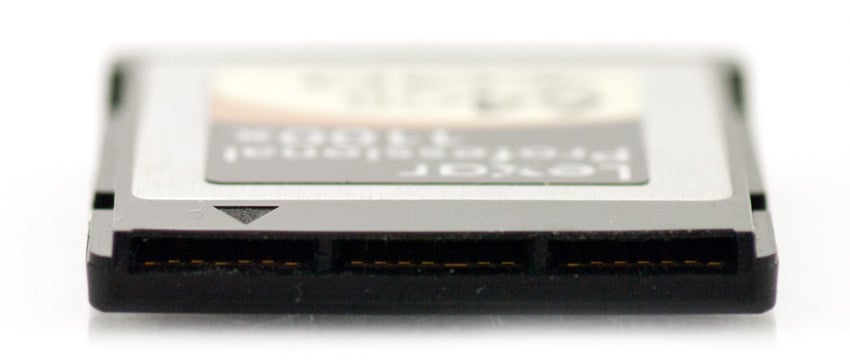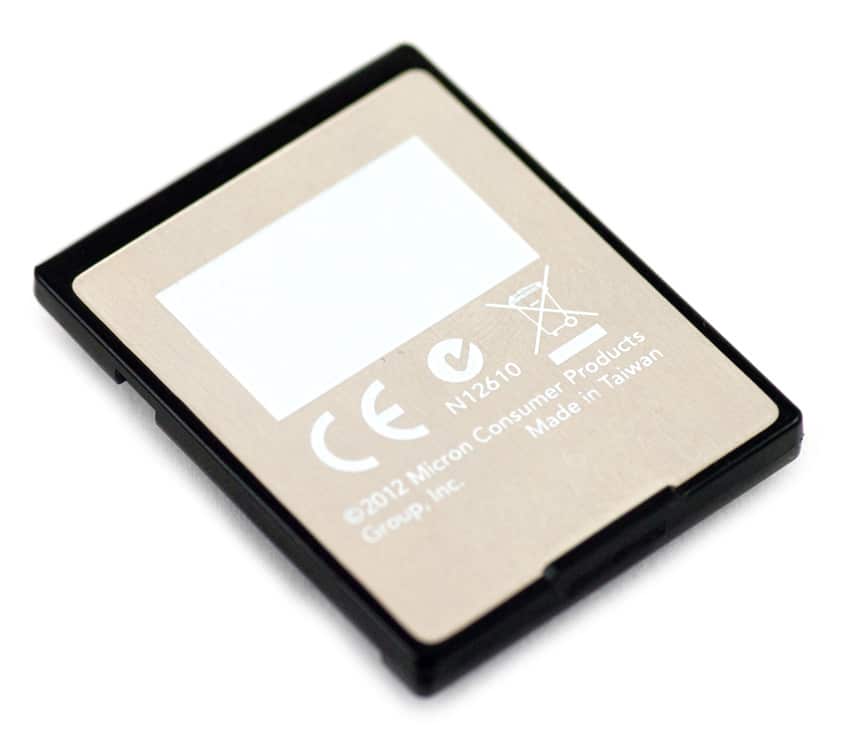 The Lexar Professional 1100x XQD card is a high performance memory card engineered for photographers and videographers who require accelerated transfers when capturing and editing super high-quality images, 3D video, 1080p full-HD, and the like. Transfers are rated amongst the highest in the industry at a minimum of 168MB/s for read activity (card to computer) and 155MB/s for write activity (camera to card), which has been made possible by Lexar’s (a Micron subsidiary) implementation of PCIe interface technology. The Professional 1100x XQD card also ships with a free software code for Lexar Image Rescue 4, an image recovery software.
The Lexar Professional 1100x XQD card is a high performance memory card engineered for photographers and videographers who require accelerated transfers when capturing and editing super high-quality images, 3D video, 1080p full-HD, and the like. Transfers are rated amongst the highest in the industry at a minimum of 168MB/s for read activity (card to computer) and 155MB/s for write activity (camera to card), which has been made possible by Lexar’s (a Micron subsidiary) implementation of PCIe interface technology. The Professional 1100x XQD card also ships with a free software code for Lexar Image Rescue 4, an image recovery software.
The Lexar Professional 1100x XQD card is a high performance memory card engineered for photographers and videographers who require accelerated transfers when capturing and editing super high-quality images, 3D video, 1080p full-HD, and the like. Transfers are rated amongst the highest in the industry at a minimum of 168MB/s for read activity (card to computer) and 155MB/s for write activity (camera to card), which has been made possible by Lexar’s (a Micron subsidiary) implementation of PCIe interface technology. The Professional 1100x XQD card also ships with a free software code for Lexar Image Rescue 4, an image recovery software.

For those that are new to the XQD card format, it originated in 2010 when Sony, SanDisk and Nikon decided to create a new memory format for DSLRs and HD camcorders. As with other formats such as SD, SDHC, SDXC, Compact Flash (CF), etc., the XQD format includes new specs for maximum performance and capacity points. In fact, the XQD 2.0 spec supports up 1GB/s transfers – this is of course limited by the actual card.
At the time of this review, only a couple of products support XQD, the Nikon D4 DSLR and Sony’s XDCAM line being the most prominent. These are premium products where pricing is certainly secondary to performance. The same holds true for the XQD cards. However, for professionals that require the utmost from their memory card, the Professional 1100x XQD aims to provide just that.
The Lexar Professional 1100x XQD card has a street price of $230 at 32GB and $390 for the 64GB. That pricing includes a lifetime warranty with free dedicated tech support.
The Lexar Professional 1100x XQD Specifications
- Leverages PCI Express interface technology to provide industry-leading minimum guaranteed read transfer speed of 1100x (168MB/s)
- Captures and stores high-quality images, 1080p full-HD and 3D video, and up to 100 frames in RAW format in continuous shooting mode
- Provides exceptional resilience in regards to water, temperature, shock/vibration, and more
- Free software code for Image Rescue 4 to recover lost or deleted photo and video files
- Free dedicated professional technical support
- Limited lifetime warranty
Design and Build
The XQD card is just about the exact same height as the CF card, making it taller than the SD card. It’s also a bit wider than the SD card, but the CF card is about 1.5x the width. Depth or thickness is also almost the same as with the CF card.

Looking at the Lexar Professional 1100x XQD card, the top of it features the Lexar branding we’re familiar with, but its set in a metal inlay. The reverse side of the card also features a metal plate, providing not only a premium appearance but also a rigid body that feels lasting.

The bottom of the card is featureless, but the top provides the connector which enables the card to be loaded into a camera or into a XQD card reader. Lexar provided us with a USB 3.0 XQD card reader which we’ll use in the testing below.
Performance
Using our Lenovo ThinkStation D30 with Windows 8 and Lexar’s Professional Workflow Reader, we measured the performance of the Professional 1100x XQD card over USB 3.0. It should be noted that performance in Windows 7 with stock drivers won’t perform as high as it will with stock drivers in Windows 8. With that said, we noted strong read performance using IOMeter with a 2MB sequential transfer size measuring 171.3MB/s and writes measuring 128.6MB/s. Random read performance dipped to 170.1MB/s while random write performance dropped much further down to 9.2MB/s.
To put those speeds in comparison, the 1000x KomputerBay CF Professional measured 121.3MB/s, while write activity hit 101.6MB/s. For 2MB random transfers we saw 124.2MB/s read and 52.8MB/s write.
Conclusion
XQD obviously isn’t for everyone today, but in the coming years new form factors need to take over to pick up for the limitations of what can be done today in small portable flash cards. With increasing IO demands for HD recording, there will definitely be a battle to capture the professional and high-end enthusiast when it comes to their camera’s recording and storage needs. At the moment the biggest problem in terms of adoption is the lack of physical device support and the fact that the cards are still very expensive comparatively, but both adoption and price should continue to progress mainstream over time.
When it came down to transfer speeds the Professional 1100x XQD was no slouch, topping the charts with sequential speeds measuring 171MB/s read and 128MB/s write. This surpassed what we’ve seen from both the CF and SDHC samples we’ve reviewed to date, although one area this card did fall behind in was large-block random write transfers compared to a leading CF comparable. Overall the XQD flash card format shows a lot of potential in both transfer speeds and capacity as market demands grow to demand them.
Pros
- Excellent sequential read and write performance
- No concern for bent pins like CF interface
- XQD format has huge potential for capacity and performance growth
Cons
- Pricing is currently over $6/GB
Bottom Line
The Lexar Professional 1100x XQD card is promising in terms of the long term potential for XQD, as it posted the fastest sequential numbers we’ve seen out of a memory card. Unfortunately cost holds this product and the format back; outside of fringe use cases where only speed matters, it will take more adoption and lower pricing for XQD to take off.
Lexar 1100x XQD Card at Amazon
Discuss This Review

